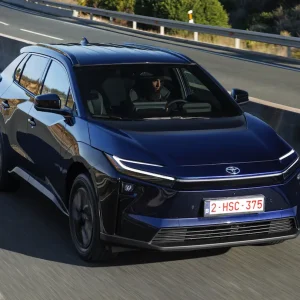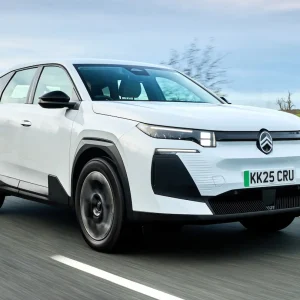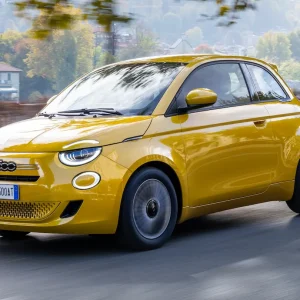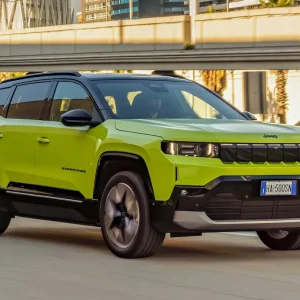Our first experience of the new Hyundai Tucson a few months ago left us impressed. The 235hp full hybrid offered a good balance of performance and fuel economy for the money, as well as impressive quality and a generous level of equipment.
Hyundai has now introduced a plug-in hybrid version of the Tucson, joining an increasingly crowded field of PHEV alternatives, including the Ford Kuga, Citroën C5 Aircross, Peugeot 3008, Toyota Rav4, Vauxhall Grandland and Volkswagen Tiguan. With prices creeping above £40,000 for some versions, it also brings premium rivals into play.
So what does the Tucson provide for the money? It has the same 1.6-litre T-GDi petrol engine as the full hybrid version, but is paired with a beefier 90hp electric motor and a 13.8kWh battery. Combined, the petrol engine and electric motor deliver 265hp maximum power and 350Nm maximum torque.
That power output places the Tucson PHEV midway between the 225hp front-wheel drive versions of the Vauxhall Grandland and Peugeot 3008, and the 300hp four-wheel drive versions. But in the Tucson, all-wheel drive is the only option.
There are four equipment grades, with the car originally available to order in Premium and Ultimate specification, and more recently, N Line and N Line S grades becoming available.
Premium and N Line have the same P11D value at £39,275, and while all attract zero VED costs in the first year, both N Line S and Ultimate are over the £40,000 threshold for higher annual road tax in future years, so as well as the higher price, annual costs on these two higher grades could be substantially greater over a fleet cycle.
The car is well equipped in what is a medium-grade entry-level model, with Premium offering standard 18in alloy wheels, LED front and rear lights, 10.25in touchscreen satellite navigation with Bluelink connected car services and a 10.25in configurable instrument display.
Our Ultimate test car adds 19in alloy wheels, leather seat facings, panoramic glass sunroof and smart electric tailgate. The optional Tech Pack is available on Ultimate models and includes electronically controlled suspension, remote smart parking assistance, blindspot view monitor (with a camera view displayed in the instrument panel), around view monitor and parking collision avoidance assistance.
However, a great deal of safety features are standard on the entry-level Premium version, including autonomous emergency braking (with scanning for approaching cars at junctions), lane departure warning and lane-keeping assistance, rear cross traffic alert, blindspot warning and downhill braking control should the Tucson PHEV be taken off road.
On the road, the Tucson is easy to drive, and offers good comfort and space. The boot, in particular, is spacious and the Tucson has clearly been developed with plug-in power and accommodating batteries in mind.
It will cover more than 30 miles in EV mode, which is the benchmark these days for 11% BIK tax, so its a competitive proposition, while perhaps falling short of best in class in this regard.
One thing we weren’t quite able to assess properly on our very short test drive was the usability of the fuel tank at 42 litres (9.5 gallons), which will run dry relatively quickly if the driver doesn’t plug in to charge frequently.
But it will discourage bad habits on that basis, as charging at home and at destinations is much more preferable than finding a filling station.
Hyundai Tucson PHEV Ultimate
P11D: £41,975
Residual value: 39.5%
Depreciation: £25,406
Fuel: £5,682
Service, maintenance and repair: £2,568
Cost per mile: 56.1p
Fuel consumption: 201.8mpg
CO2 (BIK %): 31g/km (11%)
BIK 20/40% a month: £77/£154
Luggage capacity: 558 litres
Engine size/power: 1,598cc/265hp





